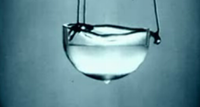
Photo from wikipedia
Abstract This paper proposes a method for separating rail and wheel noise contributions via sparse regularization of microphone array data. The underlying idea is to promote sparse solutions, which jointly… Click to show full abstract
Abstract This paper proposes a method for separating rail and wheel noise contributions via sparse regularization of microphone array data. The underlying idea is to promote sparse solutions, which jointly approximate the two noise contributions with few non-zero coefficients. The main hypothesis is that the acoustic field radiated by the rail is sparse in a dictionary of plane waves, that the acoustic field radiated by the wheels is sparse in a dictionary of moving sources, and that both acoustic fields are dense in the opposite dictionaries. How well this happens is studied with the coherence between the plane waves and the moving sources. The strength of the proposed approach is that it does not require static tests prior to the pass-by. The separation is performed in three main steps, executed in the time-frequency domain. First, the rail contribution is separated from the total pass-by noise using matching pursuit optimization, promoting solutions with a limited number of plane waves per frequency. Second, the residual between the total pass-by noise and the estimated rail noise is calculated. And third, the wheel contribution is separated from the residual via l1-norm minimization, promoting solutions that are row-sparse at all frequencies. The separation performance is investigated with synthetic data, and validated with experimental data against reference predictions with the TWINS software, for pass-by noise measurements of trains running at 40, 80 and 160 km/h.
Journal Title: Journal of Sound and Vibration
Year Published: 2020
Link to full text (if available)
Share on Social Media: Sign Up to like & get
recommendations!